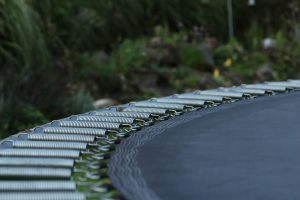 When you think back to being a kid, some of your fondest memories may involve the thrill of exploration and discovery – riding your bike around the neighborhood, playing in the woods, enjoying your new-found freedom. When you think back to those experiences, you remember what it was like and how ordinary places held a certain mysterious attraction. Unfortunately, those places are often unsafe for children, with many hidden dangers that can result in serious injury or even death.
When you think back to being a kid, some of your fondest memories may involve the thrill of exploration and discovery – riding your bike around the neighborhood, playing in the woods, enjoying your new-found freedom. When you think back to those experiences, you remember what it was like and how ordinary places held a certain mysterious attraction. Unfortunately, those places are often unsafe for children, with many hidden dangers that can result in serious injury or even death.
Accidents happen, but property owners have a special duty towards making their property safe for children. If your child has been injured on someone else’s property, this post explains why you may have a claim.
What Is an Attractive Nuisance?
An attractive nuisance is defined by Georgia law as “inherently dangerous instrumentalities, which are attractive to children.” In other words, an attractive nuisance is anything attractive to children to play on. It may be more clear if we provide some examples –
- Deep pits
- Unattended swimming pools or ponds
- Ladders or other structures for climbing
- Old machinery or other equipment
Consider an abandoned building – kids are drawn to explore what’s inside, but it can unfortunately be full of dangers: sharp objects, unstable flooring, broken stairs or ladders.
The Attractive Nuisance Doctrine Explained
The attractive nuisance doctrine is an old doctrine applied by the courts across the country, including Georgia. The general rule of property law is that property owners owe no duty to trespassers to keep them safe from injury. The attractive nuisance doctrine creates an exception to that rule – property owners have a duty to take steps to prevent injury to trespassing children if their property contains or constitutes an attractive nuisance.
The attractive nuisance doctrine holds a property owner liable if a child is injured and the following factors are met:
- The owner knew or had reason to know that children were likely to trespass on his property;
- The owner knew or had reason to know that the condition on his property presents an unreasonable risk of serious injury or death to children;
- Children would not know about or appreciate the risk present on the property;
- The burden of removing the danger is slight compared to the risk presented to children; and
- The owner failed to exercise reasonable care to address the danger or otherwise protect potential child trespassers.
This sounds very straight-forward, but can actually be very complicated when determining whether a property owner should be held liable for a child’s injury. Every case is different, and liability may be found in one case, but seemingly insignificant facts can lead to a very different result.
A Couple of Important Points
It’s important to understand that the attractive nuisance doctrine applies only when (1) the person injured in a child; and (2) the child was trespassing upon the property. In other words, the attractive nuisance doctrine does not protect adults and it does not apply to children who had permission to be on the property. In those cases, you may be entitled to compensation for other reasons.
Contact a Georgia Premises Liability and Child Injury Attorney
If your child has been injured on someone else’s property, the lawyers at Slappey & Sadd are here to help. If you would like to schedule a free consultation with one of our attorneys, call us at 404-255-6677 or email us via our online contact form.
 Georgia Injury Lawyers Blog
Georgia Injury Lawyers Blog

